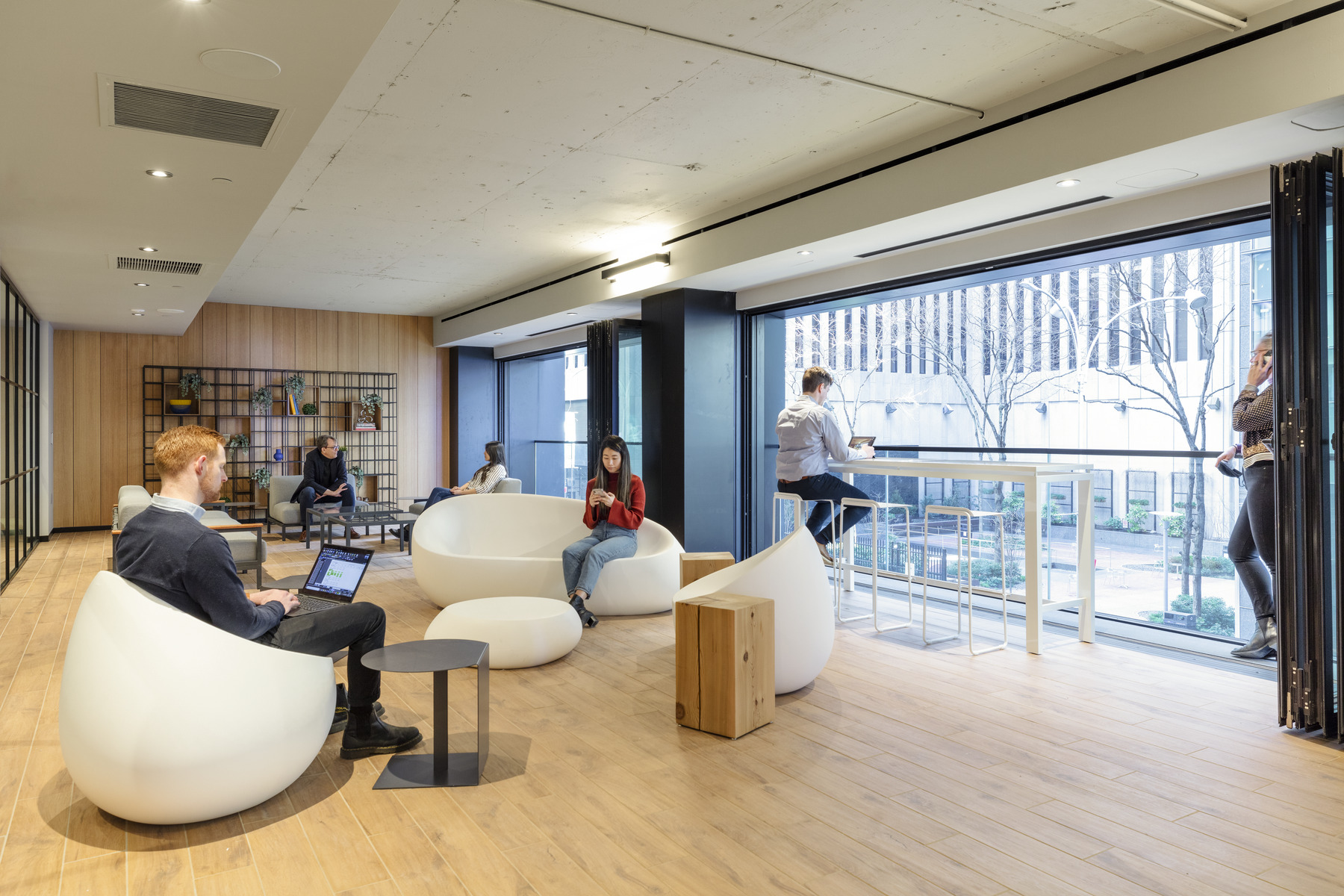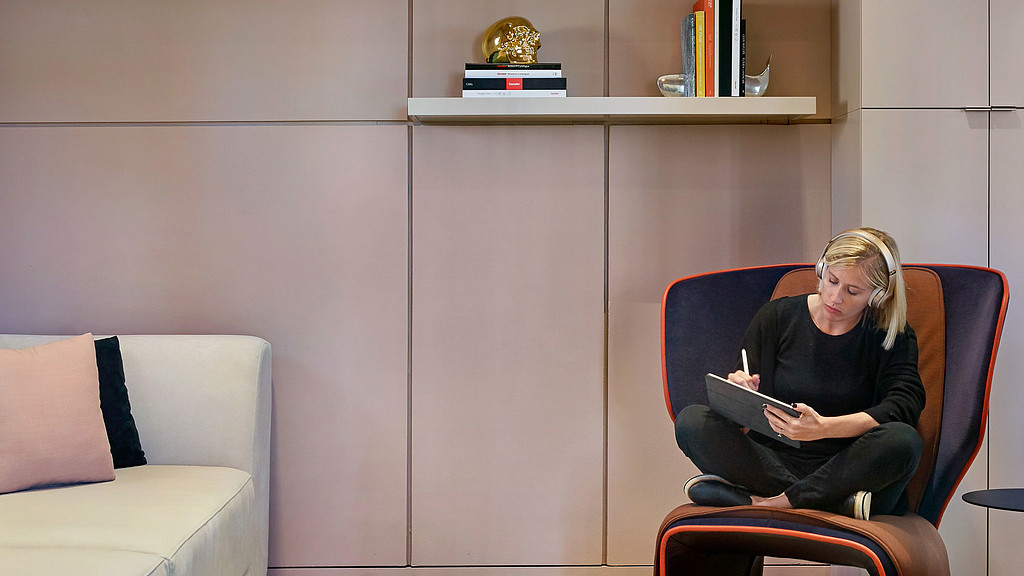Gensler’s Bonnie Reese offers advice on how to create a return to the office strategy that is specific to your organization’s culture and industry.

As employees begin to return to the office, or are being asked to return to the office, it is essential to create a strategy and supporting policies that are specific to your organization’s culture and industry. It is equally important to adopt an empathetic stance and remain open to possibilities, even if they do not align with your personal viewpoint.
Given the emotions of the past year and the concerns of business owners about the future, personal bias is loud. It’s important to set that aside during this transition to experiment and listen to employees, evaluate the quality of the newly shaped experience, and pay attention to the rest of the market as the talent war continues to heat up. Safety, both physical and psychological, are foundational to getting people back to the office.
The first question to ask is what the right approach around where employees can and should work for your business. Research conducted in late 2020 indicates that only 29% of employees wanted to return to work five days per week with 52% hoping for a hybrid work week.
Given employees’ desire for flexibility to choose where they work, it is important to recognize the risk of attrition, or inability to attract talent, if a flexible model is not on the table. Enabling employees to balance time working remotely and onsite will build goodwill by communicating your trust in their choices and empower them in ways that drive value.

A study conducted by neuroscience researcher Paul J. Zak found that “compared with people at low-trust companies, people at high-trust companies report: 74% less stress, 106% more energy at work, 50% higher productivity, 13% fewer sick days, 76% more engagement, 29% more satisfaction with their lives, [and] 40% less burnout.”
For some businesses and roles, remote work is not a long-term option. Even then, the transition back should be handled delicately and be driven with an empathy to individual employees’ situations and life circumstances.
Assuming your business has decided to bring people back either full or part time, there are several things to do in the short term to support their transition.
First, it’s important to set clear expectations for the long-term strategy while also providing plenty of notice and flexibility for the transition. Recognize that the transition back brings up both emotional and logistical challenges for people after spending an extended period working from home, so have staff available to welcome and support employees.
- Have IT and Admin support front and center to welcome employees and address the many items people forget the first day (headsets, keyboards, employee ID cards, etc.)
- Make sure the office looks alive—remove any dead plants and ensure there is no dust anywhere.
- Post signage that welcomes everyone back but also reminds people of new protocols. (Remove signage that is no longer accurate.)
- Consider refreshing anything tired. Add new elements to the space like art, fresh paint, or a new coffee machine.

This transition needs to be gently jumpstarted. The first day back can be painful as people leave the safety of their homes, relearn past behaviors or learn entirely new ones altogether. But coming into the office can remind people of the small joys of being co-present and help them overcome some of the initial transition hurdles. Create FOMO (fear of missing out) for employees who are not in the office. Try to attract, rather than dictate, their behaviors.
The following are some things to consider:
- Provide lunch or a small welcome-back gift to celebrate employees returning.
- Program small events to draw people in (happy hour, breakfast tacos, or a lunchtime lecture, for example). Chart attendance to see which events seem to have the greatest draw.
- Send a daily email announcing who will be in the office the next day as well as events that are happening. This creates a consistent reminder that the office is alive!
- Have teams hold norming sessions to chart out and own their plan to return and how they want to communicate or connect during the transition. Suggest that each team chooses one day per week to come in together, so that the early days back are filled with collaboration and connection moments.

As people come back, consider running pilots to test new protocols, technologies, and ways to inhabit the space. This should be done intentionally in conjunction with a strategy for capturing feedback and data to evaluate the given experiment.
Several clients are testing the following:
- Hot desking for team members who do not intend to return full time with a goal of reducing square footage with fewer employees in the office.
- Social and cultural programs to draw people back into the office.
- New protocols for meetings that aim to make them more productive and intentional with a hope to reduce the number of meetings.
- Schedule team sessions to better support focus and flow for individuals while enabling collaboration moments.
- Collaboration technologies, such as connected digital whiteboards and digital collaboration tools like Mural and Miro, for meetings that engage both remote and on-site participants.
Overall, we see many of the same issues that have always proven difficult pre-pandemic like aligning across time zones, difficulty with tech set up, and overbooked schedules. But we also see new challenges to overcome as expectations have shifted during a year at home—a greater desire for privacy, the desire to eliminate or minimize time spent commuting, and increased flexibility to exercise or run errands within the course of a day.
As you look to create a long-term strategy, it is imperative for the office to be designed to align with the explicit and implicit purpose of the place—whether that’s connecting to people, the brand, or the amenities. The office is no longer about being a vessel for work but an inspiration for people and the work they do.

Here are some points to consider when implementing a larger workplace strategy:
- Regardless of whether you choose a remote, on-site, or hybrid model, how are you providing differentiated value in the workplace? How are you making it special?
- How are you creating a strategy that prioritizes psychological safety and a workplace that supports employee and team wellbeing?
- How will you choreograph on-site attendance to enable the best possible experience?
- What digital solutions are in place to enable more seamless collaboration between on site and remote employees? Are they truly bridging the divide?
- If you have employees working remotely, how are you meaningfully connecting them to the culture? How will you overcome the “out of sight, out of mind” phenomenon when it comes to recognizing and promoting them?
- What events, amenities, and spaces are you creating to make the workplace an essential part of an employee’s purpose and life?
- In the face of reduction in overall square footage, how are you maintaining spaces that enable privacy and focus time?
If there’s one thing that we’ve learned from the pandemic, it’s that change is the one constant. Successful workplace leaders should embrace this disruption as an opportunity to reinvent and improve the employee experience.


